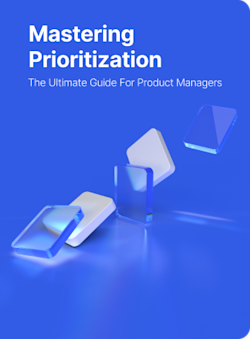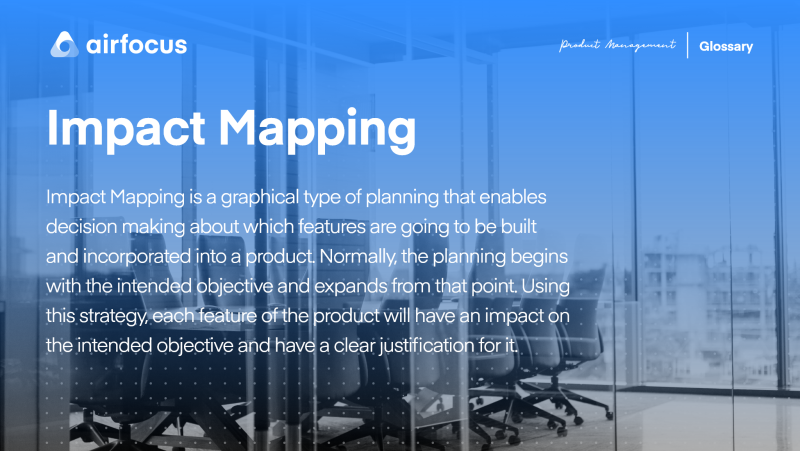Impact Mapping
What is Impact Mapping?
Definition of Impact Mapping
Impact Mapping is a graphical type of planning that enables decision-making about which features are going to be built and incorporated into a product. Normally, the planning begins with the intended objective and expands from that point. Using this strategy, each feature of the product will have an impact on the intended objective and have a clear justification for it. Impact Mapping shares similarities with story mapping and mind mapping and prioritizes features as well as identifying them. The mapping aspect comes into play by creating a means by which to map the path from the originating objective to any particular feature. En route, it will document the pertinent people or groups, the way in which they can accomplish the objective, and the required processes that will enable them to perform said actions.
Impact Mapping was developed by Gojko Adzic and was introduced in October 2012. Adzic himself is a software delivery consultant, is the author of a number of books, and the receiver of several awards.
Why Use Impact Mapping?
Using Impact Mapping in Product Management provides a number of benefits to a business. For senior staff members, it can show clear cause and effect relationships between investment in product development and the achievement of objectives. Senior management can have the assurance that project initiatives and product features receive appropriate prioritization, resource allocation is carried out systematically, and any issues or disputes are met and resolved effectively. All these elements can be managed while being able to adhere to a company’s overarching objectives.
Regarding the product itself, Impact Mapping ensures that the features are tethered to the originating objectives, eliminating mission creep, ambiguous tasking, and opaque terms of reference.
Impact Mapping is a useful tool that should be referred to throughout the development of the product. Its sequential nature provides a step-by-step guide to understanding each driver of the product development cycle. By placing more impetus on the ‘why’ of the product and its features, rather than the ‘what’, product managers, in particular, are able to keep the product relevant and the project focused.
Where Impact Mapping Sits Within Product Management
On the long road, a business must traverse from identifying a market opportunity, through product design, development, and manufacturing, to marketing, selling, and distribution, a company can lose track of its original objective. The original aim may have been to provide a particular solution to a consumer problem but in the fullness of product development, the product no longer solves the problem and the business opportunity has been lost. The product will have gradually mutated over time.
Impact Mapping helps to maintain the focus of the development on the initial aim by process mapping. By being able to trace a feature backward to the principal objective, it can remain authentic and relevant. Perhaps even more importantly, Impact Mapping is especially useful for assessing features that are not a good fit for the product. Those features that are not robust enough to withstand mapping back to the originating objectives can be cut loose. Through this, a Product Manager can keep development lithe and true to the initial goal.
Broadly speaking, Impact Mapping is a useful tool for communicating to all upstream and downstream stakeholders the justification for making decisions. Differing demands and queries arise all the time depending on the stakeholder, and Impact Mapping assists in juggling these expectations. Impact Mapping is a visual tool and easy to understand, it is suitable for digestion by anyone. Correctly followed then, Impact Mapping can resolve accountability issues and be a boon in the art of Stakeholder Management. And as one of the key roles for knowing how to deal with stakeholders lies with the Product Manager, adopting an Impact Mapping methodology is a prudent move.
Impact Mapping can also be used to plot different paths for a product in trying to achieve the overarching objective. By conducting multiple mapping in the initial stages of the development of the product, a Product Manager can plot the best path to the end solution. This can encompass all actors, deliverables, and resources, to identify the best route to success.
What to Consider When Building an Impact Map
A key concept in developing Impact Mapping is that it should be conducted in succession as one step builds on the previous one. Leapfrogging sections tend to defeat the object of the process. By identifying deliverables at the end, it can be said they have withstood the process and are worthy of remaining part of the product.
Originating goal or objective The defining goal at the outset of the process should attempt to answer what the product is attempting to accomplish. Some time should be spent here distilling the goal down to the bare essentials: the goal drives everything and so needs to be precise and concise.
The actors are the who Understanding people and groups are important as they have a direct influence on the success of the product. Upstream stakeholders such as investors and decision-makers can exert as much force on the success of the product as those downstream such as consumers. Each stakeholder needs to be scrutinized in order to determine their needs, wants, skills, and resources. Only then can their overall impact be understood. Less intuitively, it is also useful at this stage to assess any actors who could impede the success of the product.
How or roles Having identified the initial objective and then the stakeholder’s influence, the next step is to ascertain the roles of the stakeholders. In Impact Mapping, this is heavily objective orientated. This requires determining behaviors and then encouraging them. Examples include inducing decision-makers to allocate funding, engineers to write code, or external parties to recommend the product.
What deliverables Lastly, Impact Mapping considers what features will be used by the actors to forge impacts. These are commonly referred to as deliverables. These will be measured against the initial aims of the project and be prioritized according to their importance and viability.
![What is Impact Mapping?]()
General FAQ

Glossary categories
Prioritize with confidence

Experience the new way of doing product management









